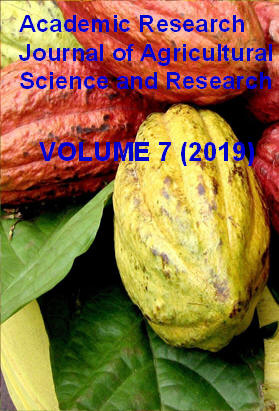|
ISSN: 2360-7874 |
Academic Research Journal of
Agricultural Science and Research |
|||||||||||||||||||
|
Vol. 7(5), pp. 256-265, July 2019 Research Food and Nutrition Security Potential of Finger Millet in Ethiopia
Bilatu Agza Gebre
Food Science and Nutrition Researcher, Ethiopian Institute of Agricultural Research, Addis Ababa, Ethiopia E-mail address: bilatuagza@yahoo.com, P.O. Box 2003, Addis Ababa, Ethiopia.
Accepted 24 June 2019
Despite remarkable achievements in the sector, the problem of food and nutrition security remains a key main health and development issue in Ethiopia, and food production to meet future demand of the growing population requires expansion of the farming land, intensification of the current production and use of harsh tolerant crops. Despite its high nutritional profile, good tolerance to adverse conditions and significant role in household nutrition, finger millet received little attention. This review summarized the potential of finger millet as a sustainable food source to Ethiopian community. The review has shown that finger millet is rich in macro and micro nutrients indicating the crop has potential to enhance household food and nutrition security in the country. The high dietary fiber, minerals and phytochemical contents together with gluten free nature of finger millet makes a recognized functional food. Nutrition information on the crop in general is limited. Even the improved finger millet varieties are mainly based on agronomic traits such as yield and disease resistance. Therefore the breeding research shall give prior attention to nutritional quality parameters. Processing finger millet can improve nutritional quality, sensory acceptability, and more importantly decrease inhibitors thereby enhance bioavailability of nutrients. However, most of such information are lacking at consumer level and needs awareness creation. Moreover, use of finger millet as an ingredient of composite flours to prepare different food products could be a good approach to promote utilization of the crop in urban areas of the country.
Key words: Finger millet, food security, nutrition security, health benefits, processing, Ethiopia
How to cite this article (APA Style): Bilatu AG (2019). Food and Nutrition Security Potential of Finger Millet in Ethiopia. Acad. Res. J. Agri. Sci. Res. 7(5): 256-265
|
|||||||||||||||||||
